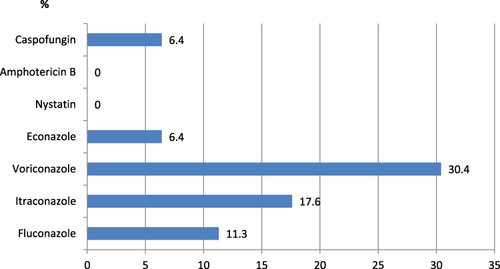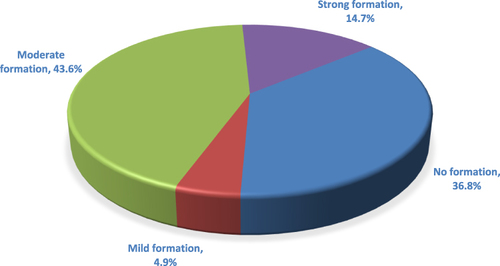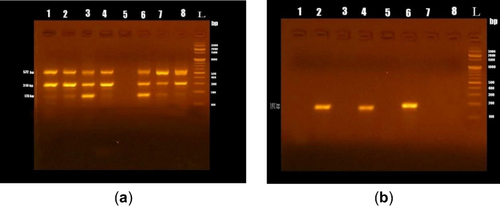Figures & data
Figure 1 Frequency of antifungal resistance in the obtained C. albicans isolates (n = 204).

Figure 2 Biofilm formation among the obtained C. albicans isolates (n = 204).

Figure 3 Gel electrophoresis of PCR targeting the biofilm-related genes HWP1 (572 bp) and ALS1 (318 bp) as well as the protease gene SAP2 (178 bp) (a) and two other protease genes SAP4 (171 bp) and SAP6 (187 bp) (b).

Table 1 Relationship Between Biofilm Formation and Azole Resistance in the Obtained C. albicans Isolates (n = 204)
Table 2 Relationship Between Aspartyl Proteinase Production and Azole Resistance in the Obtained C. albicans Isolates (n = 204)
Data Sharing Statement
All data and materials related to the study are included in the current manuscript and in the Supplementary Tables.
